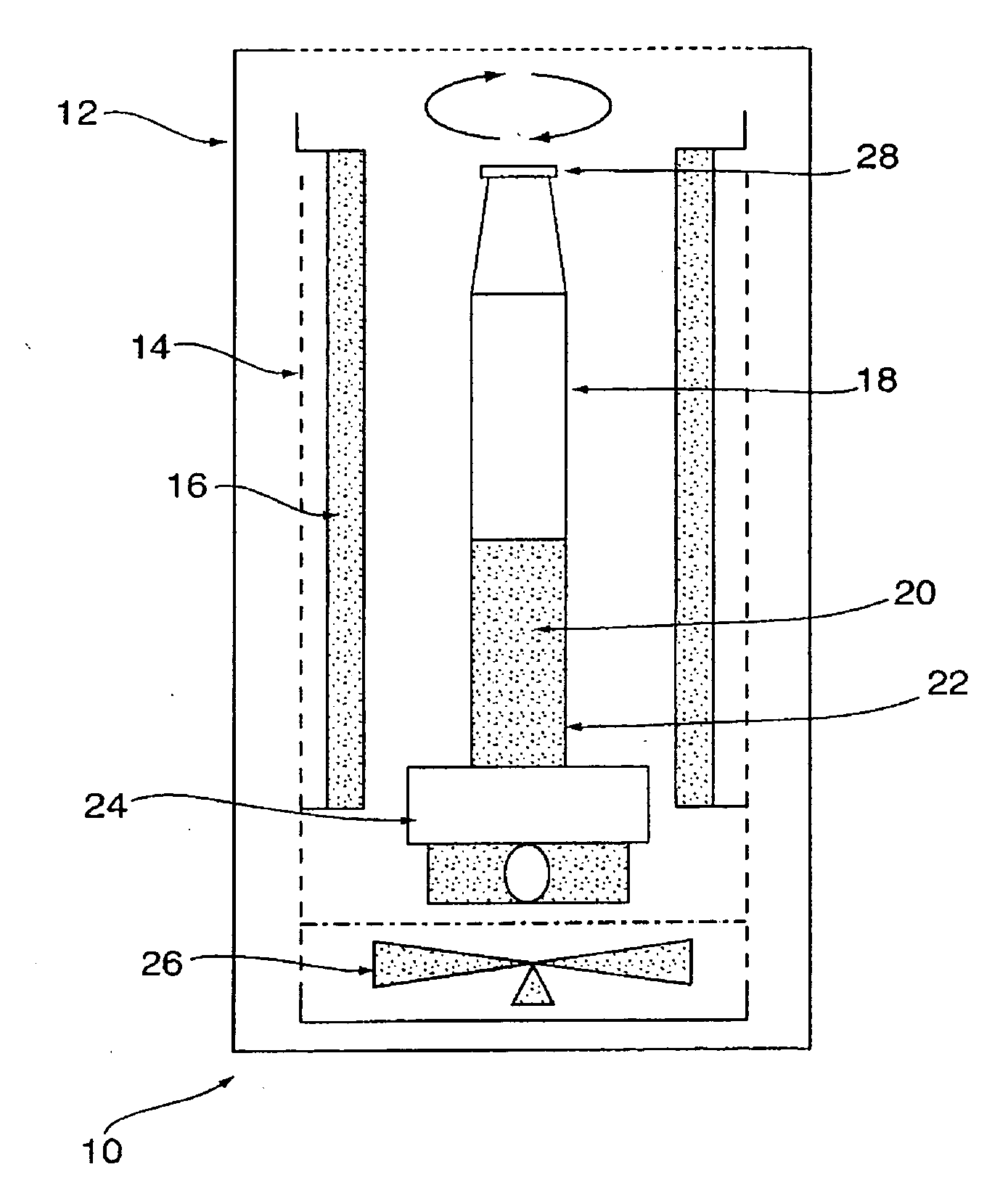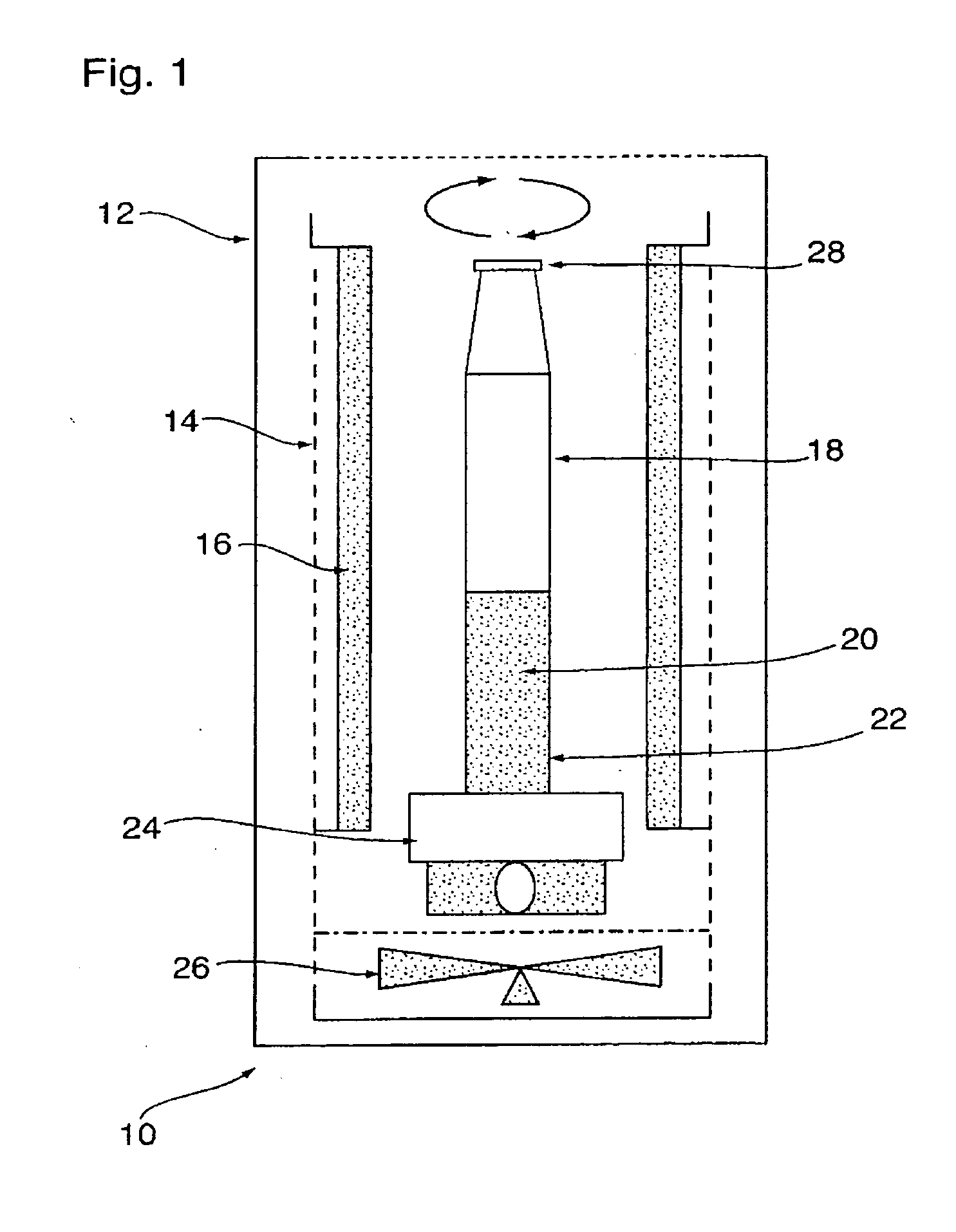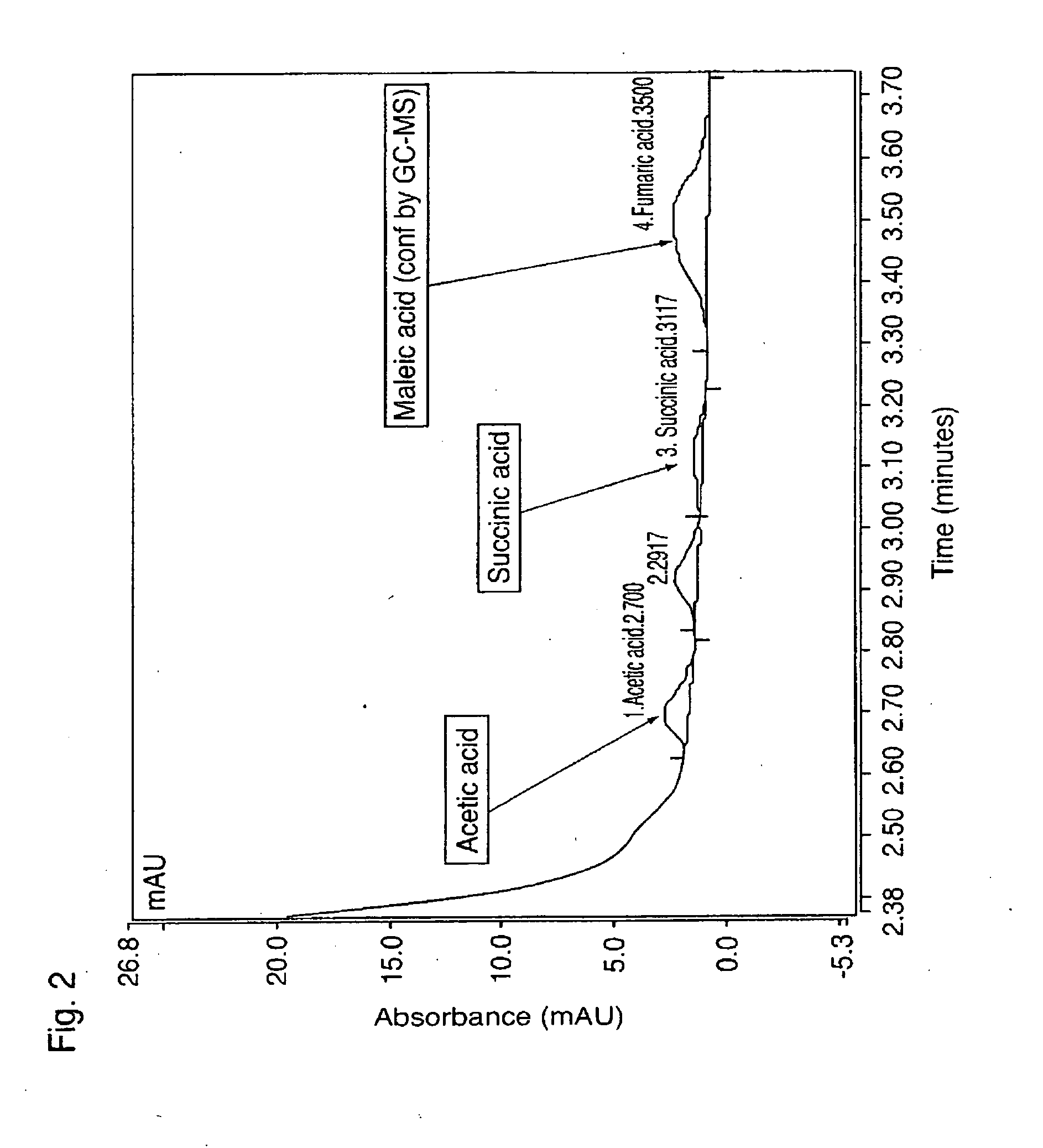Method and process of producing short chain fatty acids from waste stream containing phenolic lignin model compounds by controlled photocatalytic oxidation with titanium dioxide nanocatalyst in the presence of ultraviolet radiation
- Summary
- Abstract
- Description
- Claims
- Application Information
AI Technical Summary
Benefits of technology
Problems solved by technology
Method used
Image
Examples
Embodiment Construction
(i) General Experimental Apparatus and Procedures
[0032]With reference to FIG. 1, which shows generally as 10, a photocatalytic reactor having a temperature-controlled chamber 12, embracing a UV chamber 14 containing a monochromatic UV lamp 16 providing UV radiation at 300 nm on a quartz reaction tube 18 containing aqueous reaction liquid 20. Tube 18 holds a magnet 22 and rests on a magnetic stirrer plate 24 above a circulation fan 26 and is crimped with a Teflon® seal 28.
[0033]Degradation of the substrate was monitored using a high performance liquid chromatograph (Dionex Ultimate™ 3000, Sunnyvale, Calif.) which was equipped with a UV-visible photodiode array detector at a wavelength specific to the compound under examination. Degradation products of photocatalysis were identified using a GC-MS (Varian™, Saturn™ 2000, Palo Alto, Calif.) configured with a DB-5MS 0.25 mm (ID)×30 m (length), 0.25 μm (film thickness) column and DBFFAP 0.25 mm (ID)×30 m (length), 0.25 μm (film thickness)...
PUM
| Property | Measurement | Unit |
|---|---|---|
| Size | aaaaa | aaaaa |
| Activation energy | aaaaa | aaaaa |
| Acidity | aaaaa | aaaaa |
Abstract
Description
Claims
Application Information
 Login to View More
Login to View More - R&D
- Intellectual Property
- Life Sciences
- Materials
- Tech Scout
- Unparalleled Data Quality
- Higher Quality Content
- 60% Fewer Hallucinations
Browse by: Latest US Patents, China's latest patents, Technical Efficacy Thesaurus, Application Domain, Technology Topic, Popular Technical Reports.
© 2025 PatSnap. All rights reserved.Legal|Privacy policy|Modern Slavery Act Transparency Statement|Sitemap|About US| Contact US: help@patsnap.com



